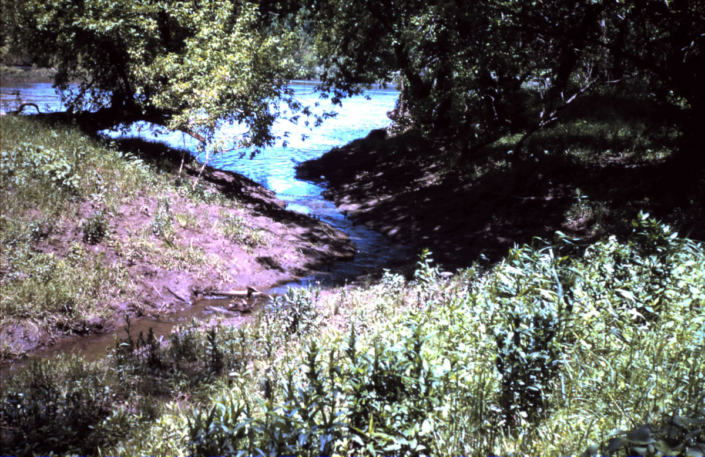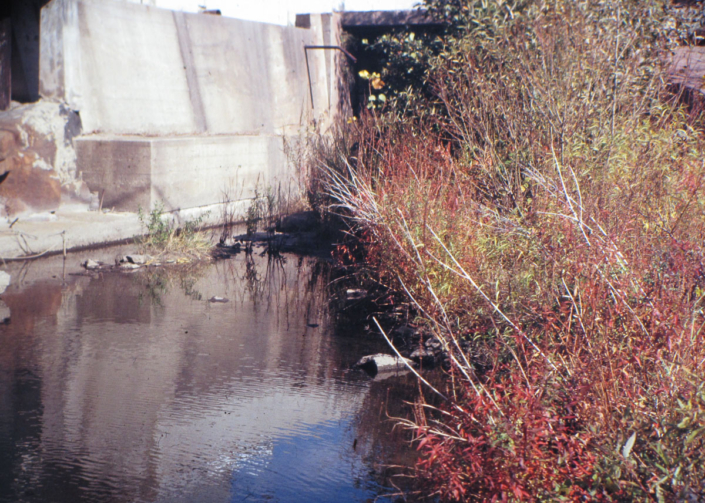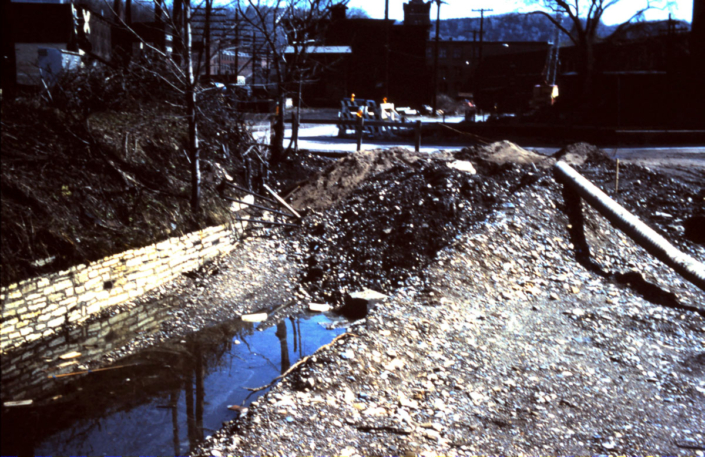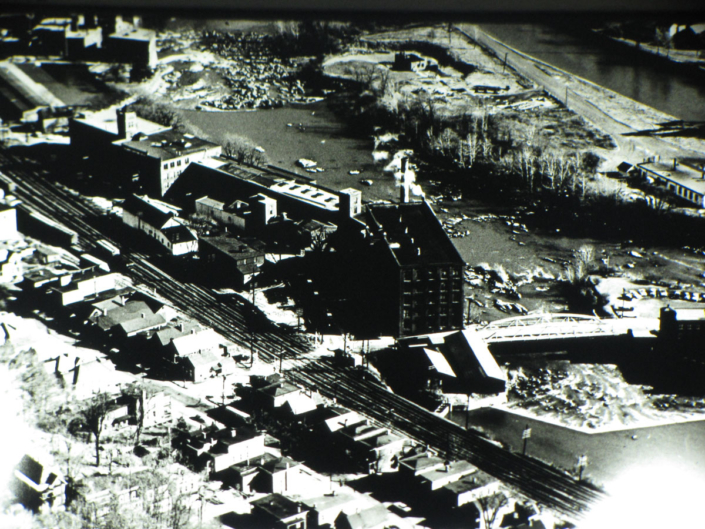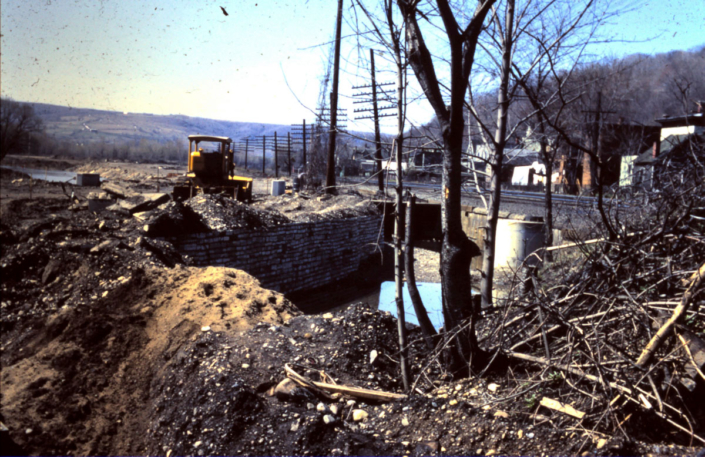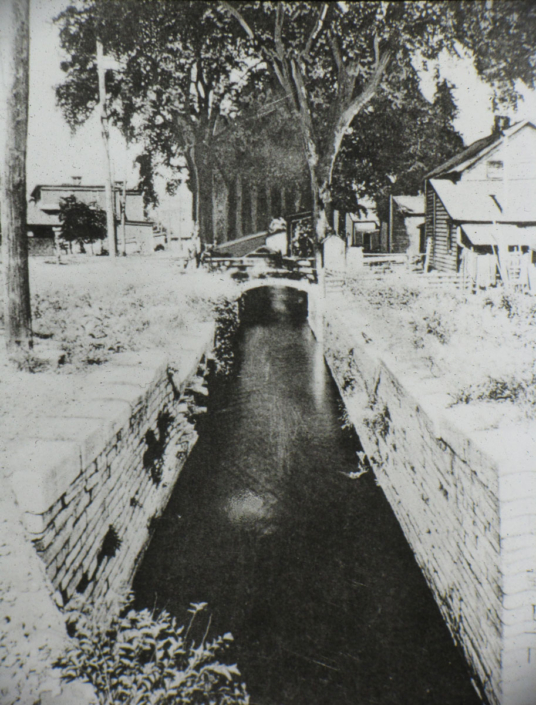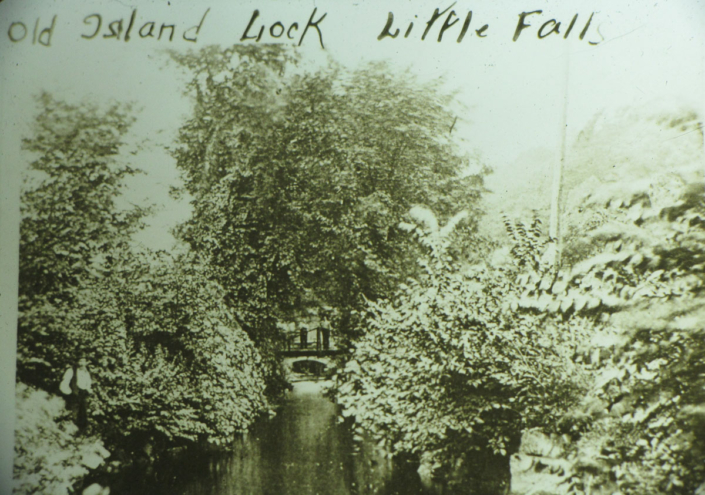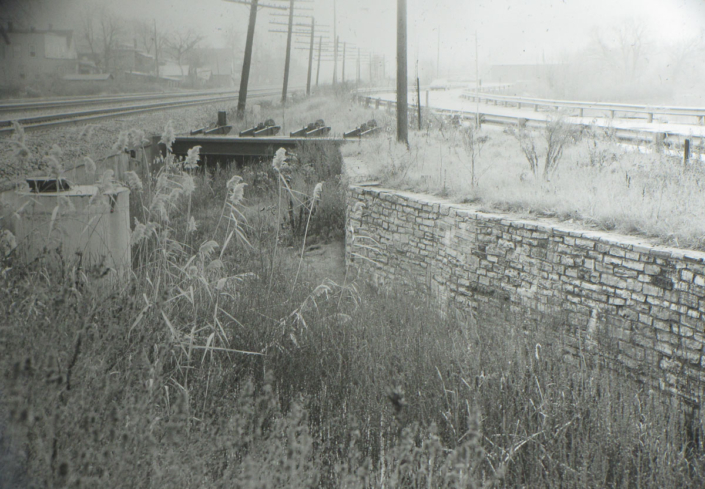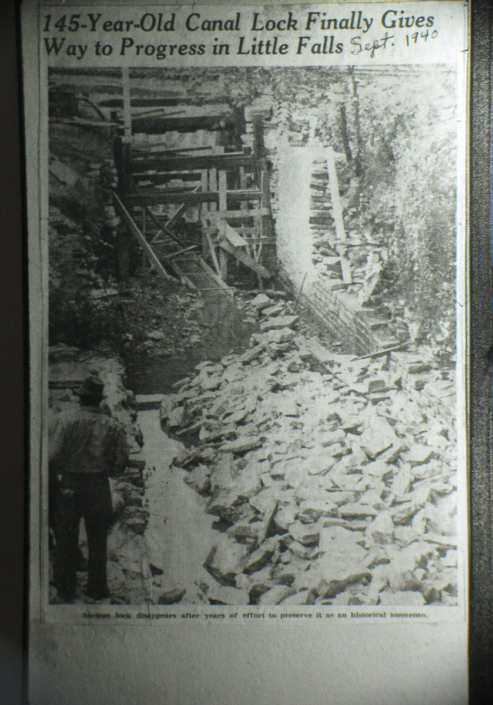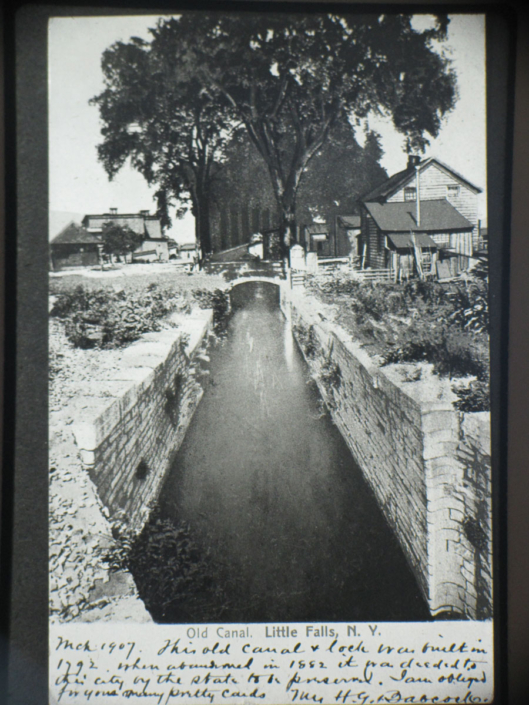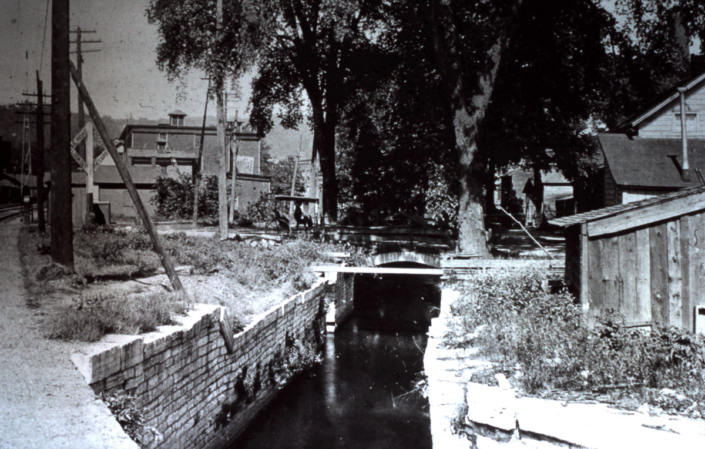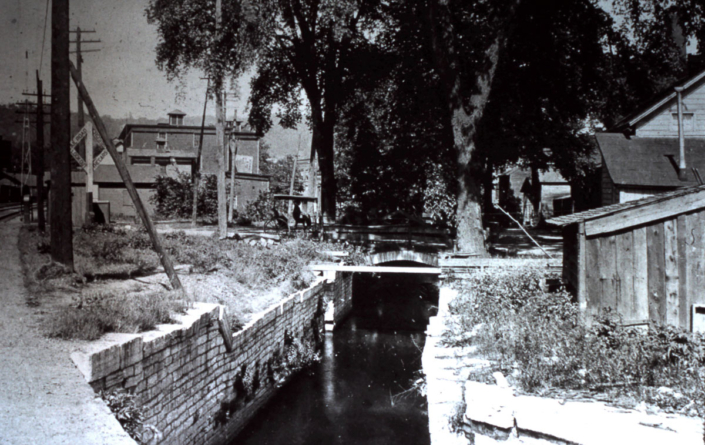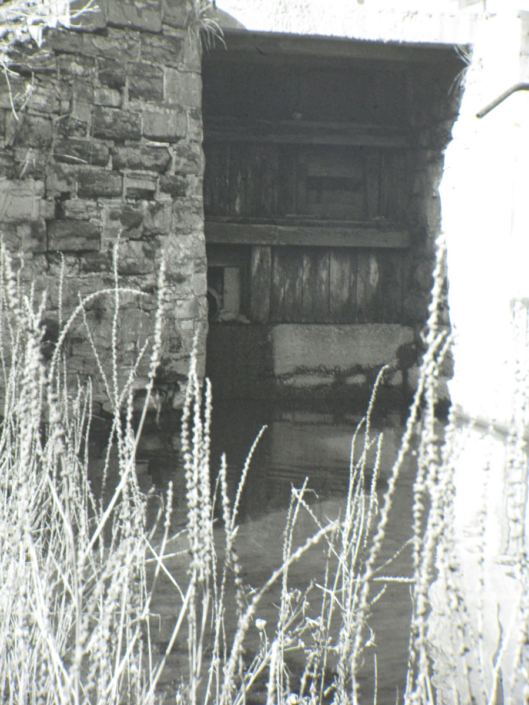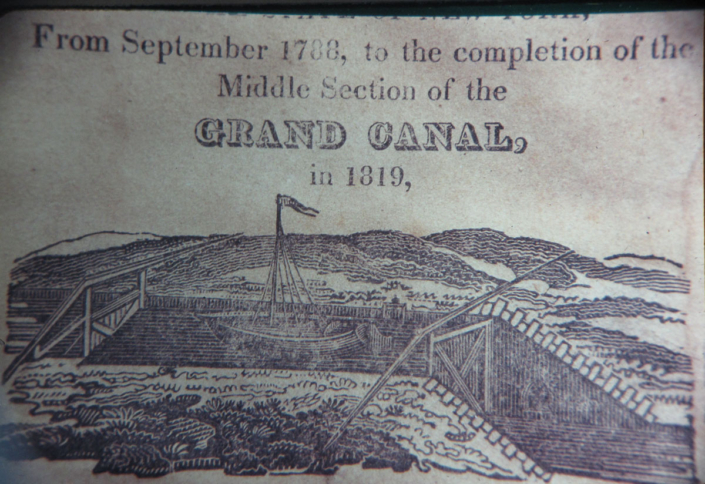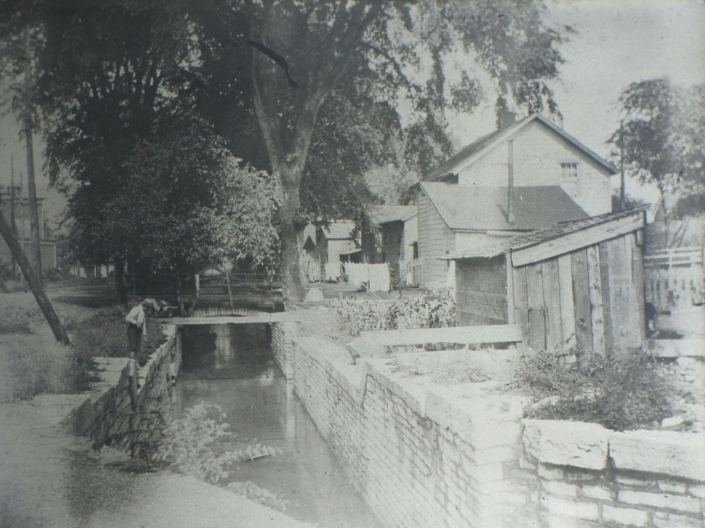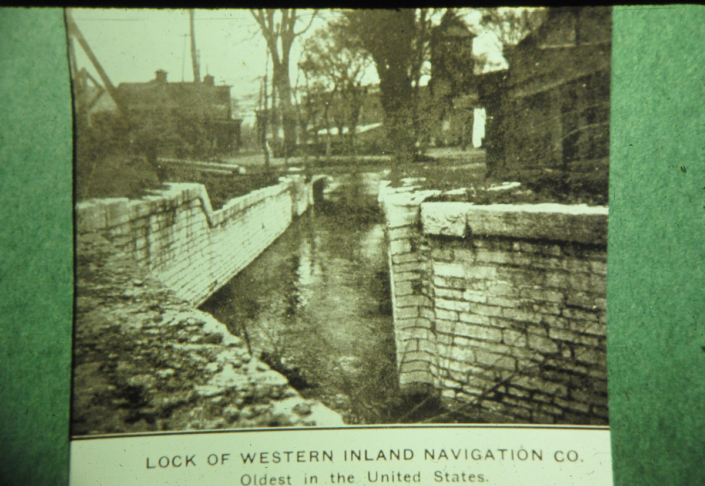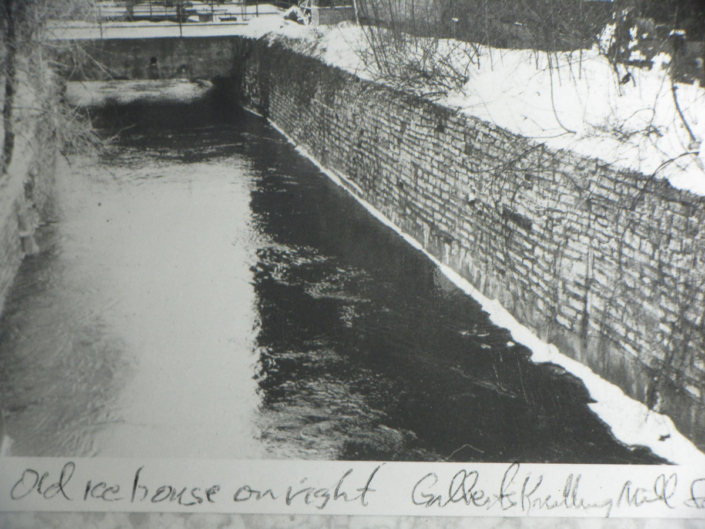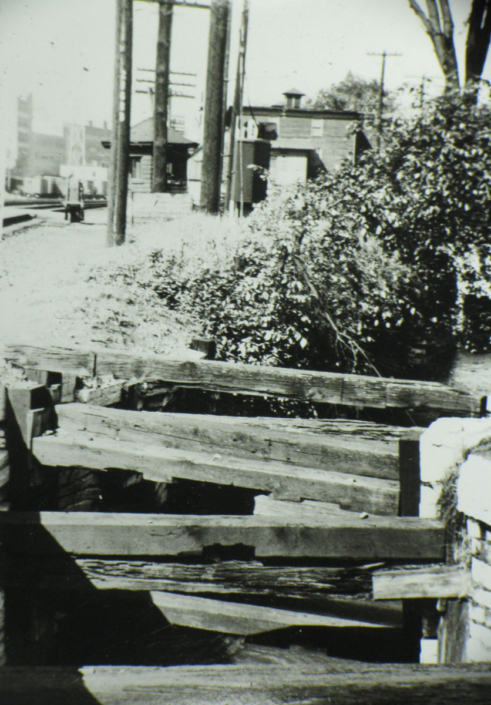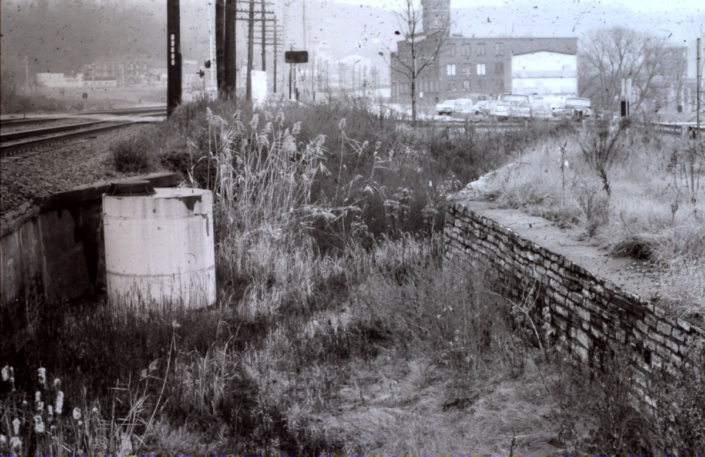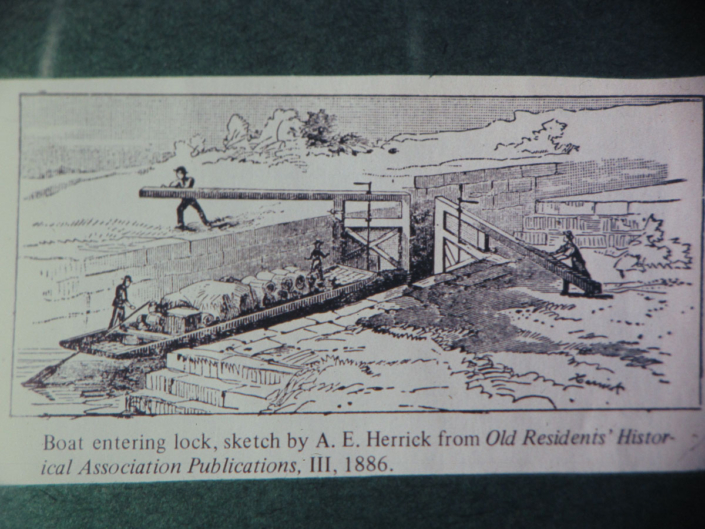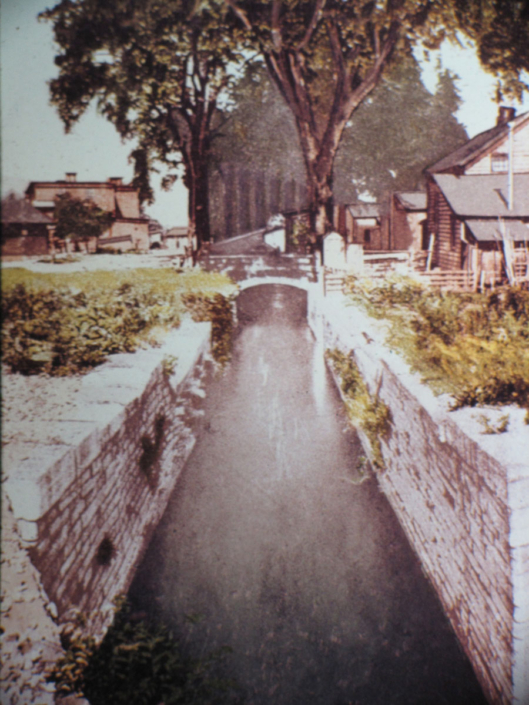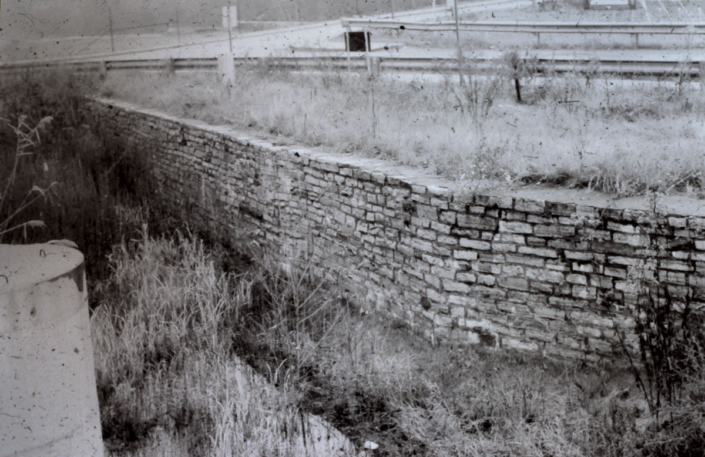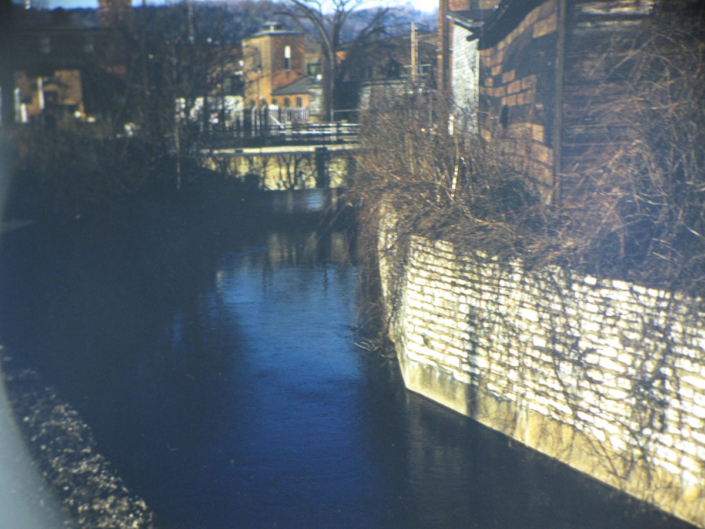The Western Inland Lock Navigation Canal
Narrated by Megan Good, Cooperstown Museum Studies Graduate Program, SUNY Oneonta, Class of 2022.
The Mohawk River Valley has influenced the industry and growth of the United States, providing means of transporting high quantities of goods over vast distances.
A few hundred feet south of you runs the Mohawk River, and its mile long stretch of rapids for which the city of Little Falls gets its name.
Known as “Astenrogan” or “tumbling water” to the Mohawk Indians, these rapids resulted in a 40 foot drop from start to end, a stretch impossible to travel by boat, interrupting a mostly placid journey.
Travelers and haulers had to pull their boats from the river, carry the boats and their cargo a mile alongside the falls, and then place them back in the water. This was a costly endeavor in labor, time, and money. Many boats had short wagons stored in them to help move goods along the river, and Mohawk Indian laborers and European immigrants were often hired to help.
As the United States population and economy grew, new solutions to transport goods across the state quickly became increasingly important.
In 1792 the Western Inland Navigation Lock Company was incorporated to build canals to improve commerce and navigation on New York waterways.
By 1795, one of the first canals in the United States was built right where you are standing. The 4,752-foot canal contained 5 lifting locks, which gradually brought boats up and down the 40 foot drop of the falls. With no tow paths for oxen or mules to pull boats along, boatmen had to push their boats with poles and oars. The canal was only three feet deep and ranged from 35 to 26 feet wide, and to accommodate these slim specifications, special boats called batteaus were the primary vessel used in these waterways. They were long, narrow, and had flat bottoms and have been described as the “18-wheelers of the 18th century”.
The canal of 1795 was a key component of the growth and industrialization of Little Falls, with factories and businesses built along the canal and river.
After many improvements to the locks, being changed from wood to stone, the canal was abandoned in 1825 with the addition of the larger, deeper, quicker, and easier Erie Canal to the south of the Mohawk River. Worried about the loss of their livelihoods, residents and business owners along the old canal demanded the state to build a feeder canal, an aqueduct, and a boat basin to connect the two canals. The state approved funding upon the stipulation that the stone for the project was supplied by the citizens themselves. Eventually the boat basin was surrounded by store houses, and the feeder and aqueduct allowed boats and suppliers to be transported between the two canals.
After 1881, the majority of the canal was filled in after the land was sold to the Central Railroad Company. Some remnants of one of the canal’s guard locks can be seen in the Industrial Park west of you, and part of the aqueduct can be seen from the Canal Place bridge. While both the Little Falls Canal of 1795 and the Erie Canal are no longer used for their original purpose, the waterways of Little Falls are still important to the character and economy of the city today.
Explore related content
- Little Falls Waterways – Virtual exhibit that examines how over the past two centuries the waterways of Little Falls have undergone major alterations.

